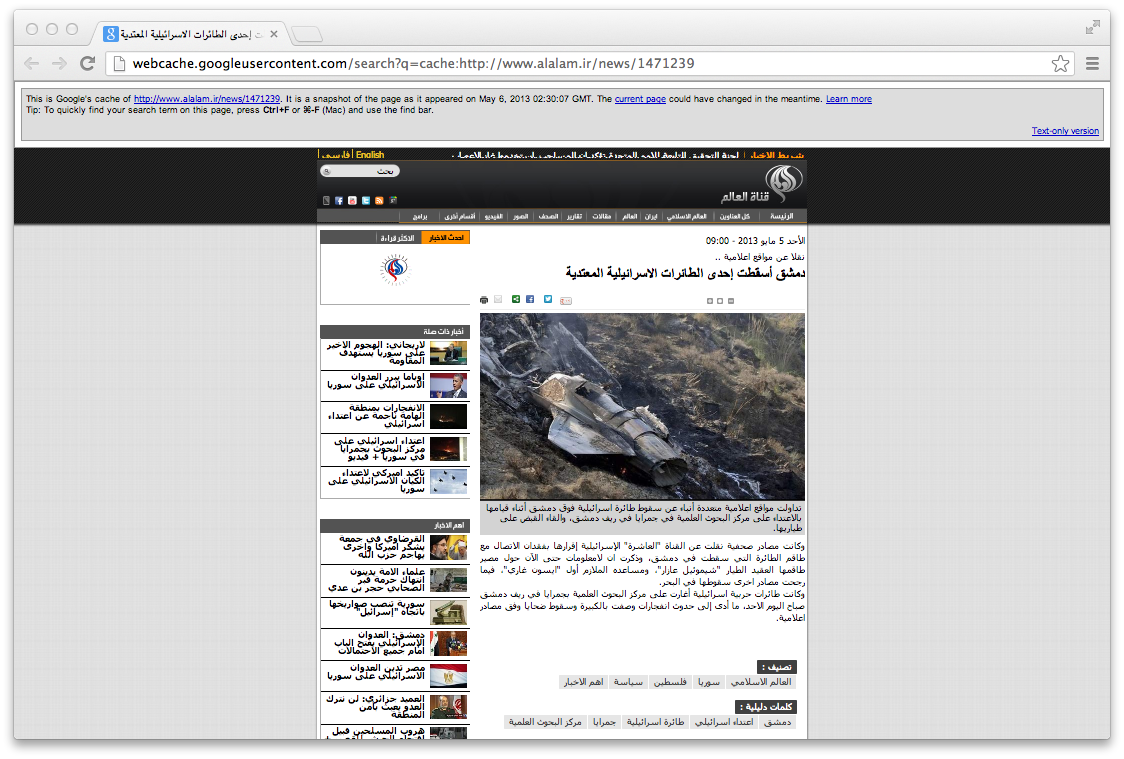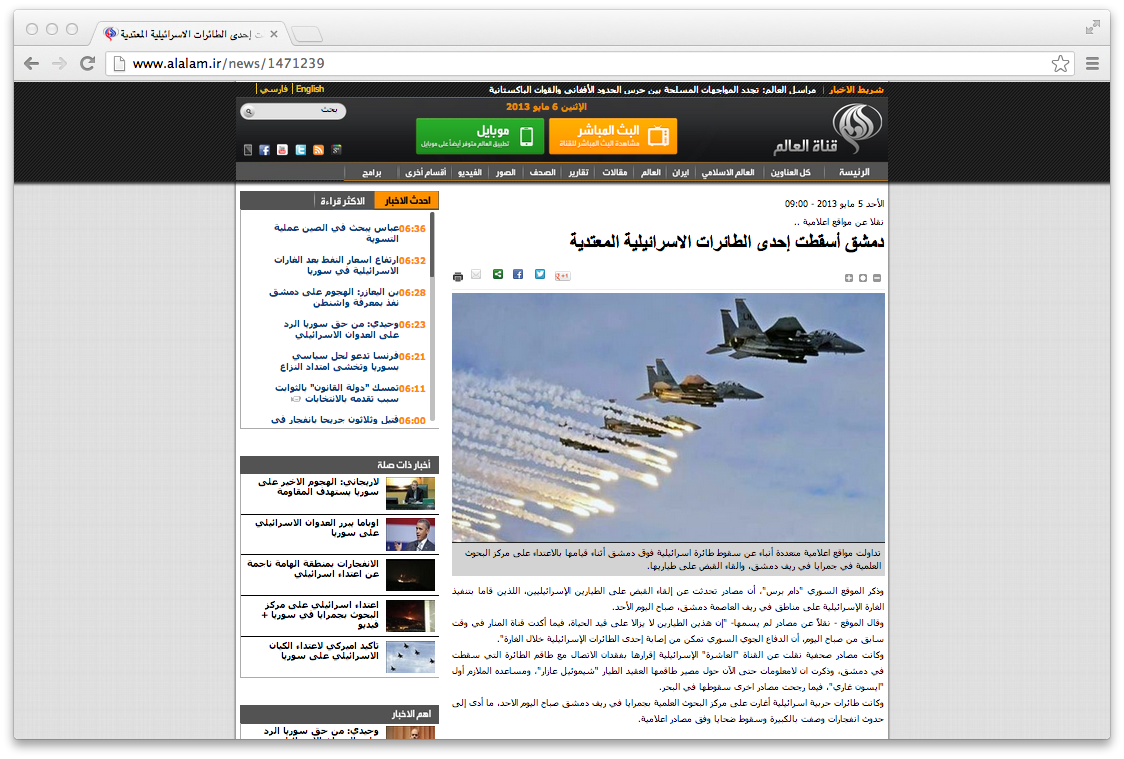There are several starting points for discussing the Israeli strikes in Syria of the past week: to what extent the operation will affect US policy, or how much the Israeli action is really directed at the Iranian nuclear program.
But then there's the photoshopping..
Aks Alser, an Aleppo-based news site, found that in the hours following the Israeli strike on Damascus, Iran's state-owned Arabic-language broadcaster, Al Alam, had photoshopped a picture of a 2011 plane crash in Pakistan to suggest that it was the "downed" Israeli jet that the Hizbullah-run satellite TV networkAl Manar claimed had been "hit" by Syrian fire.
Al Manar did not offer any photos with its report, and now reports that "security forces" told its correspondent an Israeli plane was "hit" - leaving some ambiguity as to whether it actually ended up crashing or limped back to base. Al Alam, however, suggested that it had:
Here is the text of the original Al Alam article, since modified after this photo was removed, which is far more ambiguous about the sourcing than the original (and fake) photo suggested:
"Damascus downed one of the Israeli planes."
"Several online media outlets circulated news about a downed Israeli plane in Damascus, which was targeted as it was shelling the center of scientific research in Jamraya in Damascus suburbs, and its pilot was reportedly captured."
"Some sources quoted the Israeli Channel 10 which stated that the crew remained unaccounted for. The channel mentioned that there’s been no information until now about the two missing pilots whereas other sources said the plane had fallen into the sea.
Al Alam's story took off with thousands of shares on social media. Aks Alser then investigated the photo and found that it was doctored, posting the evidence on its Facebook page. Someone had removed the original watermark and a bystander in the shot of the crashed plane. Aks Alser then identified the plane not as an F-15I, the Israeli variant of the F-15E Strike Eagle that carried out Operation Orchard in 2007 and would likely have been used to bomb Damascus, but as a Pakistani Air Force jet that crashed in a 2011 training accident.
Commenters on Aks Alser's Facebook shared the post a few hundred times before Al Alam apparently replaced the edited photo with a generic image of F-15E "Strike Eagles" in flight. This image can be found on several aviation wallpaper sites, and has not been edited. The text of the revised article shows similar ambiguity at the original - but also actually names the "missing" pilots allegedly in Syrian custom (though the revised report also repeats the possibility the plane fell into the sea):
At least this time, Jar Jar Binks was absent from the scene.
As to why Al Alam used a photoshopped image - not the first time a state-owned Iranian news outlet has done so – it's worth remembering that Al Alam was created in 2003 by the Iranian government, the year the US invaded and occupied Iraq, to serve as an "alternative" to Al Jazeera (then owned by the Qatari government) and Al Arabiya. Just as the US competes for “hearts and minds" with its own Arabic-language AV programming, Al Alam serves a similar purpose for Tehran. Despite being a slipshod photoshop job, the image offers its audience the ability to imagine that Israeli air superiority over their airspace does not go unpunished, even though it often does because the Syrian and Lebanese governments fear the consequences a more active defensive posture on their part might bring down on their heads.
From the viewpoint of Iranian officials, Israel losing a fighter this week in combat would represent a small victory that could be played up for Bashar al-Assad after the possible deaths of dozens of Syrians soldiers and criticism from the rebels that he would rather fight his fellow Syrians than the Israelis (of course, this logic can cut both ways, to the rebels' detriment). So taking out an F-15I would have offered at least some concrete action to back up Syria's oft-repeated claim that it will retaliate against Israel and a time and place of its choosing. Especially if what a Syrian defector recently told The Guardian is true: that while radar tracked Israelis planes entering Syrian airspace on the night the reactor was attacked in 2007, the Syrian air defenses were ordered to hold their fire.



